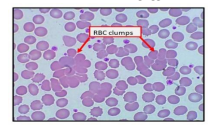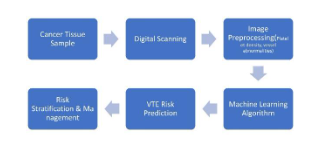Hyalinizing trabecular tumour with concomitant classic papillary thyroid carcinoma: a case report.
Dr. Alka Rani

Keywords: Hyalinizing trabecular tumour, Papillary thyroid carcinoma, Case report.
Introduction: Hyalinizing trabecular tumour (HTT) is a rare follicular cell-derived thyroid neoplasm which fall under category of low-risk neoplasm. HTT show presence of GLIS rearrangements. No RAS/ BRAF mutations are detected. We herein report case of Hyalinizing trabecular tumour with concomitant Classic papillary thyroid carcinoma.
Case presentation: A 54-year-old Pakistani woman with complain of neck swelling and thyrotoxicosis (raised T3: 3.84, T4: 16.8 and low TSH: <0.01 uIU/ml). Ultrasound neck showed: Hypoechoic relatively well-defined nodule in right lobe of thyroid with small spikes of calcifications measuring 14.6 x 8.9 mm. Fine-needle aspiration cytology turned out to be Category III as per The Bethesda System for Reporting Thyroid Cytopathology. Patient underwent right lobectomy. On gross examination, a well circumscribed lesion was identified that measured 1.2 x 1.2 x 1 cm. Histological analysis revealed a circumscribed lesion arranged in trabecular growth pattern in background of hyalinized stroma. The cells are large, elongated having abundant eosinophilic cytoplasm, elongated to ovoid nuclei with nuclear grooves and intranuclear inclusions. Immunohistochemical stains CD56, Ki-67 (membranous) were positivity. Synaptophysin, CK19 and Calcitonin were negative. Smaller focus of another lesion measuring 0.1 x 0.1 cm was identified composed of thin cores of fibrovascular tissue lined by tumour cells with nuclear crowding, overlapping and clearing. Immunohistochemical stains CD56 showed loss of expression and CK19 was positive.
Conclusion: We diagnosed this case as Hyalinizing trabecular tumour with concomitant Classic papillary thyroid carcinoma. Both lesions harbour different molecular genetics and prognosis.



References:
[1] Umekita, Y., Umeki, K., Kawano, F. et al. Unusual papillary thyroid carcinoma with hyalinizing trabecular tumor-like feature in a young female patient: a case report. J Med Case Reports 17, 112 (2023). https://doi.org/10.1186/s13256-023-03870-9.
PMC6389773.
Biography: Dr. Alka rani has completed her Post graduation from Aga khan University Hospital, Pakistan .I am working as Senior instructor, histopathology department at Aga khan University Hospital. I had published and presented 10-11 abstracts in different conferences.
#UCJournals #ThyroidCancer #PapillaryThyroidCarcinoma #HyalinizingTrabecularTumor #ThyroidPathology #EndocrineOncology #ThyroidResearch #CancerResearch #MedicalCaseReport #PathologyCase #EndocrineTumor #ThyroidTumor #ThyroidNeoplasm #OncologyResearch #Endocrinology #PathologyCommunity #SurgicalPathology #CancerCaseReport #Histopathology #EndocrinePathology #RareTumor #ThyroidSurgery #OncologyCase #MedicalResearch #ClinicalPathology #TumorBiology #EndocrineHealth #CancerDiagnosis #ThyroidHealth #MolecularPathology #OncologyEducation #Histology #PathologyResearch #MedicalEducation #CancerAwareness #EndocrineDisorders #ClinicalOncology #CaseStudy #TumorResearch #ThyroidCaseStudy #OncologyPathology #RareCaseReport #MedicalCaseStudies #ThyroidSpecialist #EndocrineOncologist #ThyroidNeoplasia #PathologyEducation #CancerPathology #ClinicalResearch #EndocrineTumors #HistopathologyResearch #MedicalPublication



